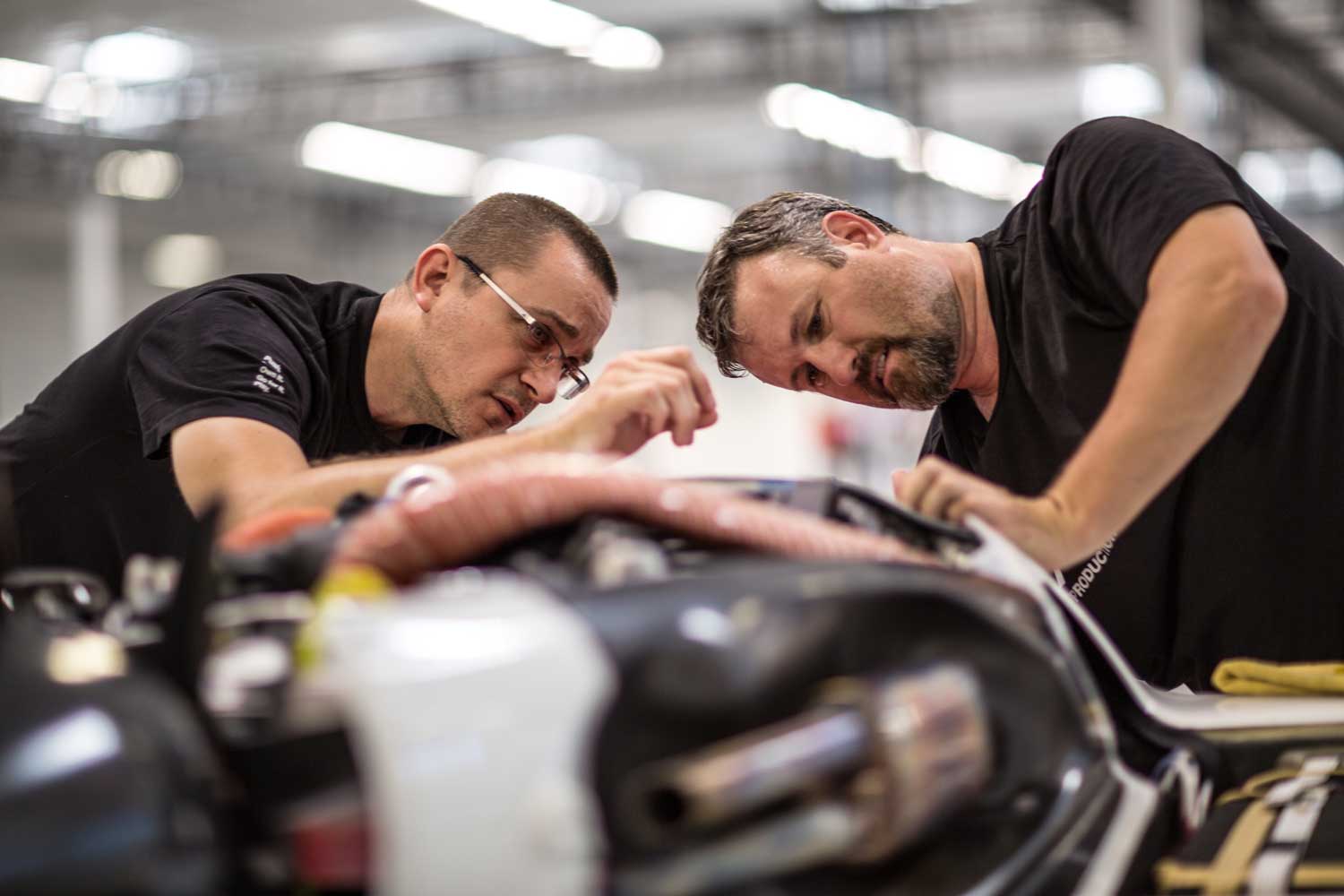Power. Sport.
Meet the Rotax 912 iS Engine
The ICON A5 was designed to be nimble, responsive, and incredibly fun to fly. Meant to simplify what pilots need to manage while in the cockpit, the A5 allows pilots to focus on their environment and become more immersed in the world in which they are flying. One feature that allows pilots to enjoy this simplicity is the ICON A5’s powerplant, the Rotax® 912 iS 100hp engine.
Those interested in purchasing an ICON A5 may not be familiar with the Rotax® 912 iS engine. Unlike many traditional Lycoming or Continental engines, the Rotax® 912 iS is an electronically-controlled fuel-injected engine, which optimizes the fuel-air mixture in all operating conditions and removes the need for a carburetor. Rotax® engines are simple to operate, relatively lightweight, and more efficient than air-cooled competitors. While there are technically more Lycoming and Continental engines being flown across general aviation (GA), there is strong data to support that Rotax® engines are just as, if not more reliable, easily reaching the 2,000-hour TBO. The Rotax® 4-stroke is one of the most commonly used engines in the Light Sport Category and the worldwide fleet has approximately 85,000,000 flight hours and counting.
iS vs. ULS
For those familiar with Light Sport aircraft or recreational vehicles, Rotax® is a household name. The ICON A5 uses the Rotax® 912 iS engine, which is slightly different than the 912 ULS powerplant often found in other Light Sport aircraft. Electronically-controlled fuel injection is the greatest difference between these two engines, and it is a considerable one. Similar to Lycoming IO or Continental IO engines, which have automatic mixture control, the starting procedure is as simple as starting your car engine. Most significantly, the iS version is more efficient, offering a 1 gallon per hour (gph) improvement over the ULS engine. The 912 iS automatically controls fuel efficiency by switching to a lean ECO mode at throttle settings below 97%. On a cross-country flight, this can amount to a 20% decrease in fuel consumption compared to the ULS.
Operating the Rotax 912 iS at High RPMs
Similar to a car engine, the more you rev 912 iS, the more power it produces. Rotax® engines are designed to run at high RPM with small displacement and short strokes. In the ICON A5, it is recommended to cruise at roughly 5000 RPM and climb at max power, approximately 5800 RPM. The Rotax’s RPM settings are approximately double the recommended settings versus conventional Lycoming or Continental engines. These engines run at lower RPM to match the propeller’s most efficient RPMs, which causes them to lose efficiency.
The Rotax® engine requires a reduction gearbox to slow down the propeller, but this added complexity is a reasonable trade-off given the efficient output and small package of the 912 iS. ICON has operated the A5 with the Rotax® powerplant for tens of thousands of flight hours and this has reinforced the company’s belief that the 912 iS is clearly the powerplant of choice for small general aviation aircraft. Considering the global fleet of Rotax-flown four-stroke engines is more than 50,000 aircraft, it’s easy to see that the industry agrees.
Flying on Car gas vs. Aviation Gasoline
One of the operational benefits of the 912 iS engine is that it can utilize autogas (91 Octane) or traditional aviation gas (100LL). Some pilots may not initially understand this benefit since few airports offer 91 octane fuel on the field, but being able to run on mogas has its advantages, particularly in the seaplane operating environment. While aviation fuel is cleaner than it was decades ago, 100LL has about the same lead content as leaded gasoline in the mid-80s. Engine automation, iS injection technology, and the option to use unleaded car/aviation fuels means that Rotax® aircraft engines burn cleaner, making the 912 iS the powerplant with the lowest CO2 emissions in its class. In addition, being able to refuel with mogas at a marina means that a seaplane powered by the 912 iS has increased versatility compared to the competition.
High Altitude Considerations
The ICON A5 was designed to make flying easy, safe, and as fun as possible. Part of what makes flying the A5 so exhilarating is flying in the low-altitude environment. However, any aircraft can become underpowered if flown in the wrong operating conditions, and the A5 is no different. The ICON A5 has more than enough power to take off in standard conditions at full gross weight at just about any airport or lake in the United States. It also has the power and maneuverability to allow pilots of all skill levels to viscerally interact with the physical world and delivers life-changing, impressionable experiences that no other aircraft can deliver. But just like any airplane, the ICON A5 has its limits. When flying in high altitude or high-density altitude environments, the pilot in command should expect a decrease in performance of the 100 hp piston engine and plan accordingly.
The Rotax® 912iS-equipped ICON A5 will not outclimb or outhaul most other GA aircraft, but it will make flying more enjoyable, more efficient, and more modern for anyone looking for a game-changing recreational aircraft.
To learn more or to experience the ICON A5 firsthand, please request a demo flight here. Visit FlyRotax.com to learn more about the 912 iS.

